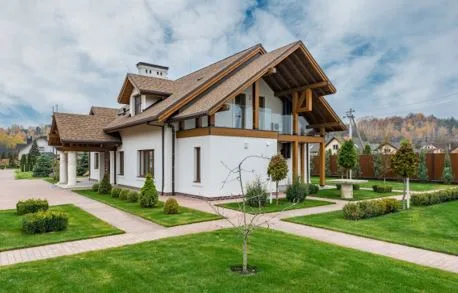Beyond the To-Do List: House Upgrades That Simplify Future Maintenance
Daily upkeep can be time-consuming, especially in a place like Willoughby, OH, where fluctuating weather can wear down materials faster than expected. From freezing winters to humid summers, the elements impact how often things need cleaning, checking, or fixing. By focusing on smarter improvements now, residents can spend less time handling issues later. Many local residents are now exploring long-lasting solutions that reduce the need for frequent upkeep. Whether it’s switching out outdated materials or installing low-effort features, simple changes can add long-term value and peace of mind.
Here are some low-maintenance solutions designed to take future hassle off your list:
Switch to Durable Siding Options
Wood requires sanding, sealing, and painting almost every few years. To avoid that constant upkeep, look into fiber cement, stone veneer, or engineered vinyl. These materials are engineered to resist moisture, UV rays, and pests without needing regular attention. They’re also more resistant to cracks and fading, especially in climates where moisture builds up quickly. You won’t have to keep repainting or replacing rotted panels. Instead, a once-per-year wash with water is often all they need. Many brands offer limited lifetime warranties, too. It’s one of the simplest ways to ease long-term upkeep and protect your structure against seasonal damage without constant attention or unexpected repairs.
Invest in Reliable Heating, Cooling, and Water Services
Local providers in Willoughby, OH, offer long-lasting solutions beyond just basic installs. Some offer full-service plumbing and HVAC support with energy-efficient equipment and custom recommendations based on your home’s age and layout. For example, a local contractor can install high-efficiency water heaters, air quality units, sump pumps, and backflow systems. They also provide maintenance packages to keep equipment running smoothly over time. When you hire an HVAC contractor in Willoughby, OH, you’re not just getting new equipment, but you’re getting access to regular inspections, smart system setups, and prompt response if anything breaks. That level of support reduces the likelihood of future issues and gives you more time to focus on other things.
Upgrade to Composite Materials for Decking
If you have a deck or plan to build one, think long-term. Traditional wood surfaces fade, splinter, and grow mold in wet conditions. They often require sanding, staining, and resealing. Composite boards remove much of that work. These planks are made from recycled wood fibers and polymers, making them more stable over time. They resist mold and pests better, and they hold up well against foot traffic and sun exposure. In this region’s climate, that’s important. Composite materials also come in many textures and colors that don’t peel or chip. All you’ll need is a seasonal rinse. No more splinters or patch jobs. Just clean lines that last.
Install Gutter Guards to Prevent Clogs
Leaves, seed pods, and heavy rains can overwhelm your gutter lines quickly. Without protection, you’ll spend hours scooping out debris or pay for someone else to do it. Gutter guards create a barrier that blocks debris but lets water pass through. This helps keep drainage working properly and reduces the risk of overflows or ice dams. In a city where autumn brings heavy leaf fall, this makes a real difference. Gutter guards also lower the chance of pests nesting in downspouts or clogged areas. Once installed, they require little to no upkeep beyond visual checks, saving both time and stress as the seasons shift.
Pick Flooring That’s Easy to Clean and Durable
Floors take a beating, especially near entryways, kitchens, or areas with kids and pets. Carpet stains, scratched hardwood, and loose tiles are common complaints. Instead, consider materials like luxury vinyl planks, sealed concrete, or porcelain tile. These surfaces hold up well to daily wear and don’t absorb moisture. They’re also quicker to clean. Just a sweep and mop will usually do the job. If you live in a wet climate, flooring that won’t warp or peel from moisture matters. You’ll also avoid the costs of hiring steam cleaners or sanding down worn spots. With the right choice, your floors will stay looking fresh with little effort.
Evaluate Kitchens and Baths for Old Materials
Even if a space looks clean, older components may stop performing well. Over time, seals on sinks dry out, surfaces discolor, and hardware loosens. Instead of full remodeling, focus on what needs attention first. Replace old caulk, fix dripping faucets, and clean grout that’s become stained. Look at drawer hinges, towel bars, and knobs that feel loose or worn. These aren’t just visual details—they affect comfort during everyday use. If there’s enough room in your budget, consider swapping older fixtures for something energy-saving or easier to clean. These updates don’t need to be expensive. A few weekend efforts can keep things feeling current without tearing everything out.
Add Storage Without Changing Layouts
Running out of room doesn’t always mean you need to expand. It often means the space isn’t being used as well as it could be. Think vertically: wall-mounted shelves, over-the-door organizers, and high cabinets can make a big difference. Look for storage opportunities in areas such as under the stairs or above appliances. Hooks and pull-out racks are affordable and easy to install. Adding storage in plain sight, like benches with compartments or tables with drawers, can make daily routines easier. When items have a place, things stay more organized, and you avoid clutter that builds over time. It’s about smarter use, not more square footage.
Refresh the Front Entry and Walkways
First impressions come from the area just outside your door. Keep paths clean, fix any loose pavers, and update small elements like lighting or house numbers. These minor adjustments can shift how welcoming your place feels. If there’s room, add a bench or potted plants on either side of the entry. Repainting the door, replacing old doormats, and repairing broken railings are all doable in a weekend. Lighting plays a big role here too—aim for fixtures that work well and look clean, even when turned off. Improving the front area doesn’t mean a complete makeover. It’s about making what’s already there feel cared for.
Keeping your living space in good shape doesn’t have to be difficult or expensive. By paying attention to signs early, handling manageable tasks regularly, and being thoughtful with updates, you can avoid bigger issues later. It’s not about changing everything. It’s about taking steps that align with how you live. You don’t need a massive budget or endless free time. You need awareness, timing, and a plan that fits. Whether you’re replacing a worn fixture, checking for leaks, or adding better lighting, each action supports a more reliable, efficient, and comfortable setting. Start small, stay consistent, and you’ll see the benefits grow steadily over time.



